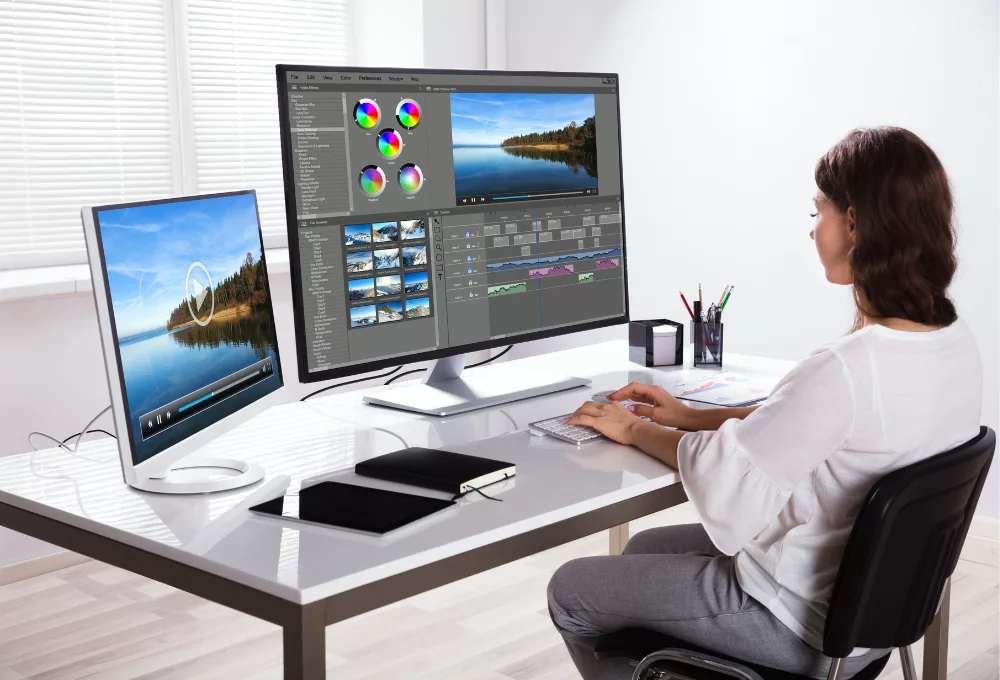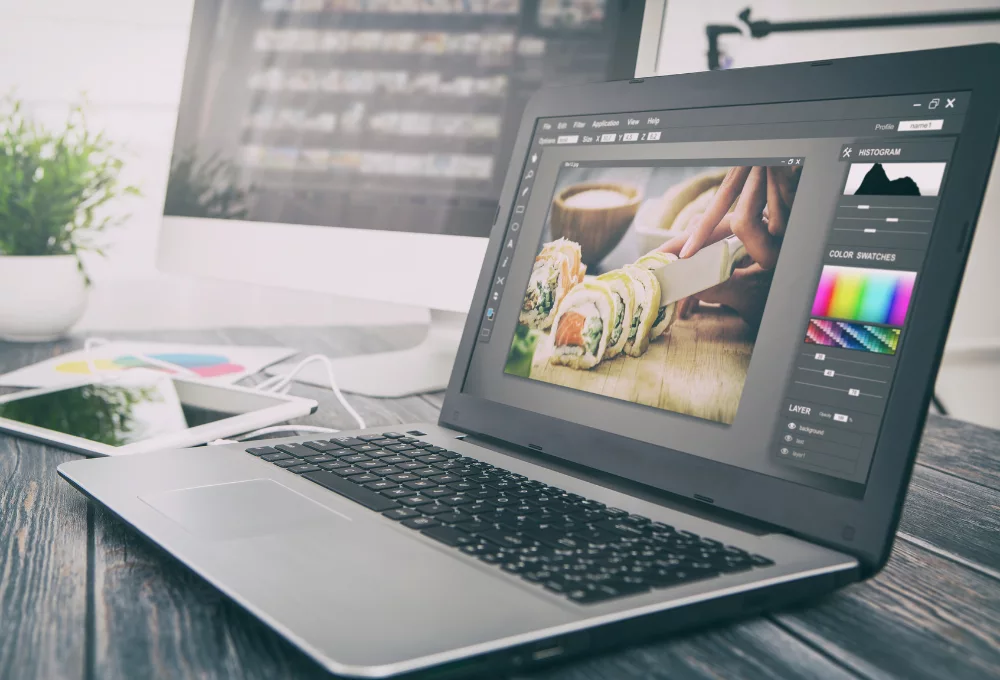The quest for the best quality output is an ongoing endeavor. With technological developments, many different video formats have evolved over time, including the popular RAW format. Despite its growing popularity, however, the RAW video format confuses many users. Is it really as superior as many claim it to be?
Are there drawbacks to using it? Let’s dive into the nitty-gritty of RAW video format and examine whether it’s the optimum choice for video content creators
What Is Raw Video Format?
In essence, RAW is a file format that captures all image data recorded by the sensor when you take a video. Unlike compressed formats like ProRes or Blackmagic, which process and reduce this data, a raw file leaves the footage untouched, offering unrivaled flexibility and control in post-production workflow.
As briefly touched upon, shooting raw video captures the most detailed and honest version of a scene. When a camera is set to shoot in this format, it collects raw data directly from the camera’s sensor and preserves it in a lossless manner within the raw video files. This process, devoid of any automatic adjustments or compression imposed by codecs, caters to the considerable size of raw video files.
In video formats, RAW is like the ‘unadulterated gem,’ and the MP4 or any other compressed video is like the ‘polished jewel’. Both have their own charm and uses. While shooting video in compressed formats such as MP4 is the go-to for many due to smaller file sizes and lesser memory card strain, shooting in RAW presents unparalleled advantages.
Working With RAW Format — Key Application Guide
When you shoot raw video, you welcome an arsenal of post-production capabilities. One of these includes the power to adjust ISO after filming. In contrast with compressed formats such as Canon Log, where ISO is baked into the footage, RAW allows you to tweak it later.

Shifting from shooting video to shooting in RAW challenges the long-standing force of habit but is increasingly preferred by professionals. It allows a wide color grading spectrum, offering greater control in rendering the final video. With the raw video format, log footage’s hues, shadows, and highlights can be adjusted without the threat of image degradation.
Working with RAW might initially seem daunting due to its extensive flexibility. Nevertheless, with practice, it can become second nature. Many compare it to shooting log video, where the ‘flat’ footage is extensively color-graded to get the desired look. However, because RAW saves the uncompressed scene version, it presents more information for grading, leading to a better final output.
RAW provides a much broader canvas than any regular format ever will. However, it’s crucial to remember that its benefits come at a cost—higher file size and tougher demands on your system. Hence, you must weigh these pros and cons before you step onto the field, camera in hand, ready to capture the world in RAW.
Some Of The Benefits Of RAW Formatting
Let’s dive into the benefits of shooting in this powerful format, where flexibility, detail, and finesse reign supreme in post-production.
- Post-production power: RAW video files are like undisturbed gold mines – immense data to be extracted and processed, giving you unprecedented control over your final result. Enhance hues, adjust exposure, and upgrade video quality without sacrificing footage fidelity.
- Brightness and contrast mastery: The dynamic range of RAW footage is unmatched, allowing you to work on highlights, shadows, and midtones with precision. Whether striving for a dramatic contrast or an ethereal softness, RAW lets you mold every aspect of your image.
- White balance wizardry: Gone are the days of unusable footage due to incorrect color temperatures. RAW video files allow you to perfect your white balance, turning even the most challenging lighting conditions into cinematic masterpieces.
- Bold and beautiful color grading: RAW footage embraces a vast color depth, opening the door to richer, more intense visuals. Transform your footage and create unforgettable cinematic experiences through stunning color grading.

Working with RAW video format can elevate your production to incredible heights, with unmatched flexibility and precision in post-production. Here’s a snapshot of the benefits:
- Flexible post-production: Refine every detail to achieve professional results
- Brightness, contrast, and saturation: Meticulous control over highlights, shadows, and colors
- White balance: Rise above lighting challenges to perfect your color temperature
- Dynamic range: Take advantage of greater levels of detail and depth
- Color grading: Embrace the creative potential of powerful color-grading tools
However, as we’ve mentioned earlier, shooting in RAW requires a certain level of expertise and preparedness. You’ll need to be conscious of the storage demands and specific workflow to handle RAW footage in editing.
Despite these challenges, it’s clear that RAW video format offers unparalleled potential. The extent of creative control during post-production empowers videographers to see their vision brought to life in a way other formats can’t compete with. Remarkable enhancements in brightness, contrast, white balance, and color grading are only the beginning when you tap into the power of RAW.
The Drawbacks Of Shooting Videos In RAW Format
Chasing the visual feast that RAW footage offers? Beware of the hidden hitches. Let’s unveil some challenges you may need to combat when exploiting the benefits of shooting in RAW.
- Storage Pressure: RAW video files are the sumos of the video file formats – their quality comes in heavy packages. These file sizes can quickly fill your memory card and demand a robust, efficient storage strategy, not to mention a potent PC to handle them smoothly.
- Post-Production Commitment: Shooting in RAW isn’t for the time-pressed. The bulkier the footage is, the longer it takes in post-production. Effortlessly navigating RAW files depends on a meticulous video workflow, as color grading and enhancements can intensify.
- Compatibility Freaks: RAW isn’t a one-size-fits-all. Each camera manufacturer may have a unique RAW format — Canon with Cinema RAW Light, RED with REDCODE, etc. Translating these RAW files can lock you into specific video production ecosystems.
As mesmerizing as the benefits of shooting in RAW may be, understanding its drawbacks can save you from unexpected hiccups. Here’s a snapshot of these considerations:
- Storage demands: Large file sizes necessitate effective storage plans and robust tech
- Extended post-production: Be ready to invest more time behind the screen for enriched outcomes
- Compatibility issues: RAW is not universally friendly; familiarize yourself with your gear’s dialect of RAW
On a silver lining, newer technologies like Blackmagic RAW and ProRes RAW are moving the industry towards more user-friendly, compressed RAW options. They encapsulate the quality of lossless RAW in a smaller package, easing the storage strain while retaining the post-production potency.

Are You Choosing RAW Or Not?
You’re on a quest for the ultimate video quality. You’ve now dabbled in the dynamic realm of RAW video format but are left wondering — should you take the RAW plunge? Let’s dissect the determining factors:
- Project specifications: Are you handling a high-stakes video project that craves color-rich frames and the liberty to adjust elements such as white balance post-production? RAW might be your ticket. But if a fast turnaround is of the essence, compressed formats, like MP4, may serve you better.
- Available resources: Got an armory of memory cards and an ironclad data storage plan? You’ll need them to tackle RAW files. Also, ensure your workstation has the muscle to handle RAW data without breaking a sweat.
Choosing to shoot RAW video doesn’t land you on a one-way street. It’s about striking a balance. Understand your project requirements, assess your resources, and let your storytelling dictate your choice.
In conclusion, RAW provides an unequaled level of grace and flexibility in video production, impacting how you grapple with white balance, compression, sensor data, and post-production workflows. Possessing a salmon raw file under your belt gives you the power to shape your footage as you envision. Yet, it is essential to understand your workflow requirements before you compress that record button and dive into RAW video formats.
At Husky HD, we’re here to help make that understanding possible. RAW or not, let’s master this journey together!





0 Comments